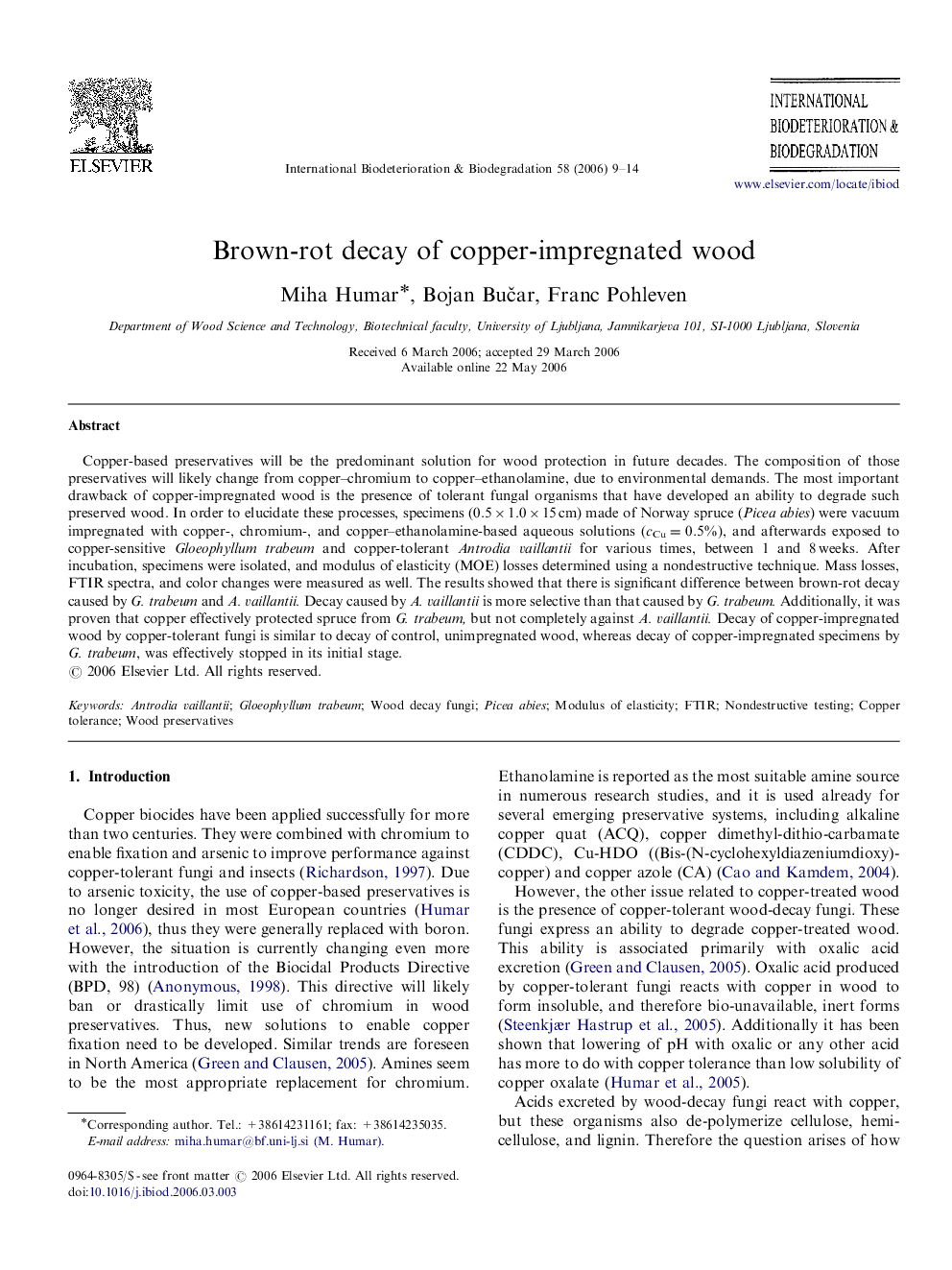| کد مقاله | کد نشریه | سال انتشار | مقاله انگلیسی | نسخه تمام متن |
|---|---|---|---|---|
| 4366075 | 1301816 | 2006 | 6 صفحه PDF | دانلود رایگان |

Copper-based preservatives will be the predominant solution for wood protection in future decades. The composition of those preservatives will likely change from copper–chromium to copper–ethanolamine, due to environmental demands. The most important drawback of copper-impregnated wood is the presence of tolerant fungal organisms that have developed an ability to degrade such preserved wood. In order to elucidate these processes, specimens (0.5×1.0×15 cm) made of Norway spruce (Picea abies) were vacuum impregnated with copper-, chromium-, and copper–ethanolamine-based aqueous solutions (cCu=0.5%), and afterwards exposed to copper-sensitive Gloeophyllum trabeum and copper-tolerant Antrodia vaillantii for various times, between 1 and 8 weeks. After incubation, specimens were isolated, and modulus of elasticity (MOE) losses determined using a nondestructive technique. Mass losses, FTIR spectra, and color changes were measured as well. The results showed that there is significant difference between brown-rot decay caused by G. trabeum and A. vaillantii. Decay caused by A. vaillantii is more selective than that caused by G. trabeum. Additionally, it was proven that copper effectively protected spruce from G. trabeum, but not completely against A. vaillantii. Decay of copper-impregnated wood by copper-tolerant fungi is similar to decay of control, unimpregnated wood, whereas decay of copper-impregnated specimens by G. trabeum, was effectively stopped in its initial stage.
Journal: International Biodeterioration & Biodegradation - Volume 58, Issue 1, July 2006, Pages 9–14